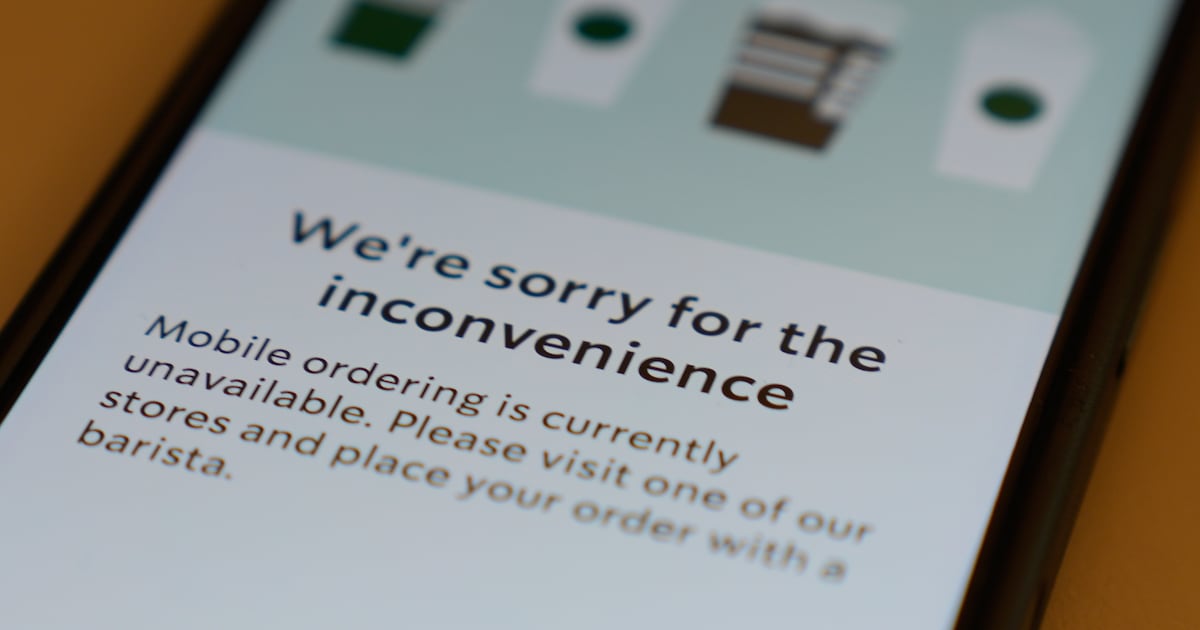Technology
AWS Outage Disrupts Daily Life and Business Across the U.S.

A significant outage of Amazon Web Services (AWS) recently highlighted the deep reliance of various sectors on a single technology provider. The disruption, which lasted for about a day, affected countless individuals and businesses across the United States, illustrating how vulnerable daily life can become when a key technological infrastructure fails.
The impact was felt swiftly and broadly. Many residents were unable to place mobile orders for coffee at Starbucks, and smart home devices, including Ring and Blink cameras, ceased functioning. More critically, hospitals reported interruptions to essential communication services, while teachers were unable to access lesson plans. Mobile banking service Chime was also down, leaving many without access to their funds.
AWS, which commands approximately 37% of the global cloud services market, plays a pivotal role in the operations of countless businesses. According to research firm Gartner, the company has a customer base of around 4 million. The outage’s effects cascaded through various industries, with analysts estimating the total economic impact could reach into the billions of dollars. Jacob Bourne, an analyst at eMarketer, emphasized that “it creates a very large single point of failure that then impacts operations at warehouses, deliveries, and the ability to sell goods and services online.”
Widespread Disruptions in Daily Activities
For many, the AWS outage transformed ordinary tasks into frustrating challenges. Debi Dougherty and her husband experienced disruptions throughout their errands in New Albany, Indiana. Despite receiving alerts from their Ring system, they were unable to view the camera footage. At a doctor’s office, the scheduling system was so unreliable that it took them 40 minutes to arrange therapy appointments that typically would have taken only a few minutes.
Their visit to Kohl’s was similarly impacted; long lines formed as credit card readers failed. At Cattleman’s Roadhouse, the manager offered to cover their meal because the restaurant could not process payments. “He said, ‘This is no fault of yours, and you’re already eating. I don’t guess you all have cash?’” Dougherty recalled, adding that their reliance on technology was “frightening.”
“I think businesses put all their eggs in one basket, relying heavily on AWS, and that might not be the smartest thing to do,” she remarked.
Business Consequences and Future Implications
The ramifications of the AWS outage extended beyond individual consumers. Cameron Sharp, the general manager at Cattleman’s Roadhouse, expressed relief that the outage occurred on a Monday rather than during the busier weekend. “If this goes into multiple days, or heaven forbid, into the weekend, we’re in trouble,” he noted.
Despite the challenges, Sharp discovered that one terminal could store transactions, which allowed for some continuity in service. “Our entire economy is based on commerce,” he remarked, highlighting the interconnectedness of businesses in today’s digital landscape.
In the broader Houston area, Dia Giordano faced a complex situation as she navigated the outage affecting her three businesses: an Italian restaurant, eight mental health clinics, and several rental properties. Her phone was inundated with alerts from DoorDash, notifying her that the online ordering system was down. “That means one-third of my business is gone for the day,” she lamented. Moreover, her mental health clinics were unable to validate clients’ insurance due to the outage affecting the online clearinghouse.
The widespread disruption caused by the AWS failure prompted Giordano to reflect on the heavy dependence on technology. “It’s frightening,” she said, emphasizing the precariousness of modern business operations tied so closely to a single service provider.
As society becomes increasingly reliant on cloud services, the AWS outage serves as a stark reminder of the potential vulnerabilities inherent in this dependence. The incident has sparked discussions about the need for greater resilience and diversification in technology infrastructure to mitigate the risks associated with such disruptions in the future.
-

 Politics1 month ago
Politics1 month agoSecwepemc First Nation Seeks Aboriginal Title Over Kamloops Area
-

 World5 months ago
World5 months agoScientists Unearth Ancient Antarctic Ice to Unlock Climate Secrets
-

 Entertainment5 months ago
Entertainment5 months agoTrump and McCormick to Announce $70 Billion Energy Investments
-

 Lifestyle5 months ago
Lifestyle5 months agoTransLink Launches Food Truck Program to Boost Revenue in Vancouver
-

 Science5 months ago
Science5 months agoFour Astronauts Return to Earth After International Space Station Mission
-

 Lifestyle3 months ago
Lifestyle3 months agoManitoba’s Burger Champion Shines Again Amid Dining Innovations
-

 Technology4 months ago
Technology4 months agoApple Notes Enhances Functionality with Markdown Support in macOS 26
-

 Top Stories2 months ago
Top Stories2 months agoUrgent Update: Fatal Crash on Highway 99 Claims Life of Pitt Meadows Man
-

 Top Stories2 weeks ago
Top Stories2 weeks agoHomemade Houseboat ‘Neverlanding’ Captivates Lake Huron Voyagers
-

 Politics4 months ago
Politics4 months agoUkrainian Tennis Star Elina Svitolina Faces Death Threats Online
-

 Sports5 months ago
Sports5 months agoSearch Underway for Missing Hunter Amid Hokkaido Bear Emergency
-

 Politics5 months ago
Politics5 months agoCarney Engages First Nations Leaders at Development Law Summit





















